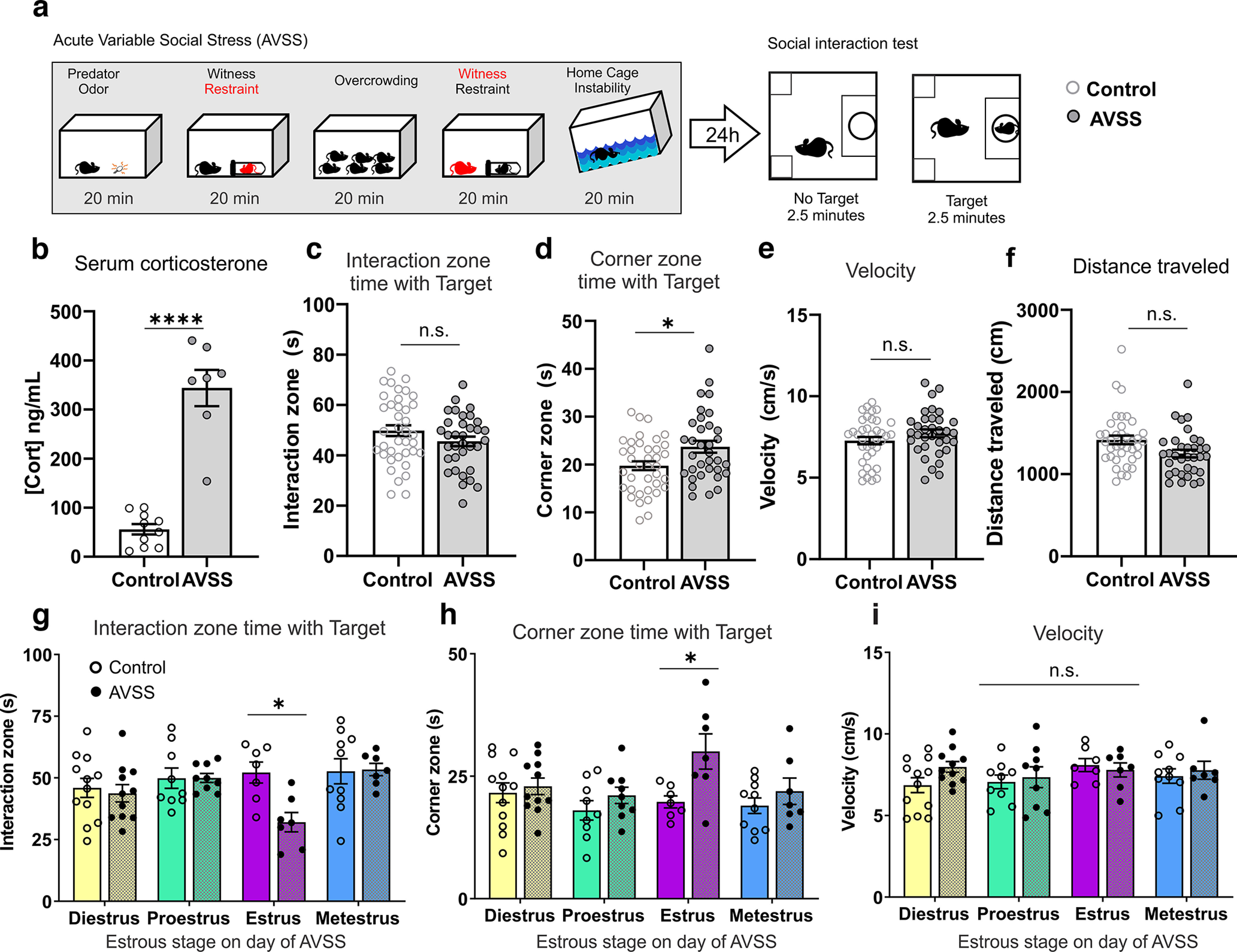Figure 4.

Estrous cycle stage during AVSS influences social interaction behaviors. a, Timeline of acute variable social stress and behavioral testing. b, AVSS increases serum corticosterone (Cort) levels in female mice (t(15) = 8.74, p< 0.0001). c, Social interaction time 24 h after AVSS (t(70) = 1.48, p = 0.14, n = 34–38 mice per group). d, Corner zone time is increased 24 h after AVSS (t(70) = 2.61, p = 0.01, n = 34–38). e, There is no significant effect of AVSS on average velocity with no target present (t(70) = 1.37, p = 0.17, n = 34–38). f, Distance traveled with no target present (t(70) = 2.37, p = 0.02, n = 34–38). g, Reduced social interaction time is driven by females in estrus on the day of AVSS stress acquisition (2-way ANOVA, cycle × stress interaction, F(3,64) = 2.87, p = 0.04, n = 7–12 mice per group). h, Corner zone time is significantly higher in mice that undergo AVSS during estrus compared with unstressed control (2-way ANOVA, cycle × stress interaction, F(3,64) = 3.47, p = 0.02). i, There is no significant effect of estrous phase on velocity following AVSS (2-way ANOVA, cycle × stress interaction, F(3,64) = 0.79, p = 0.51). (****p < 0.0001, *p < 0.05, n.s. = not significant) Error bars indicate mean ± SEM.
